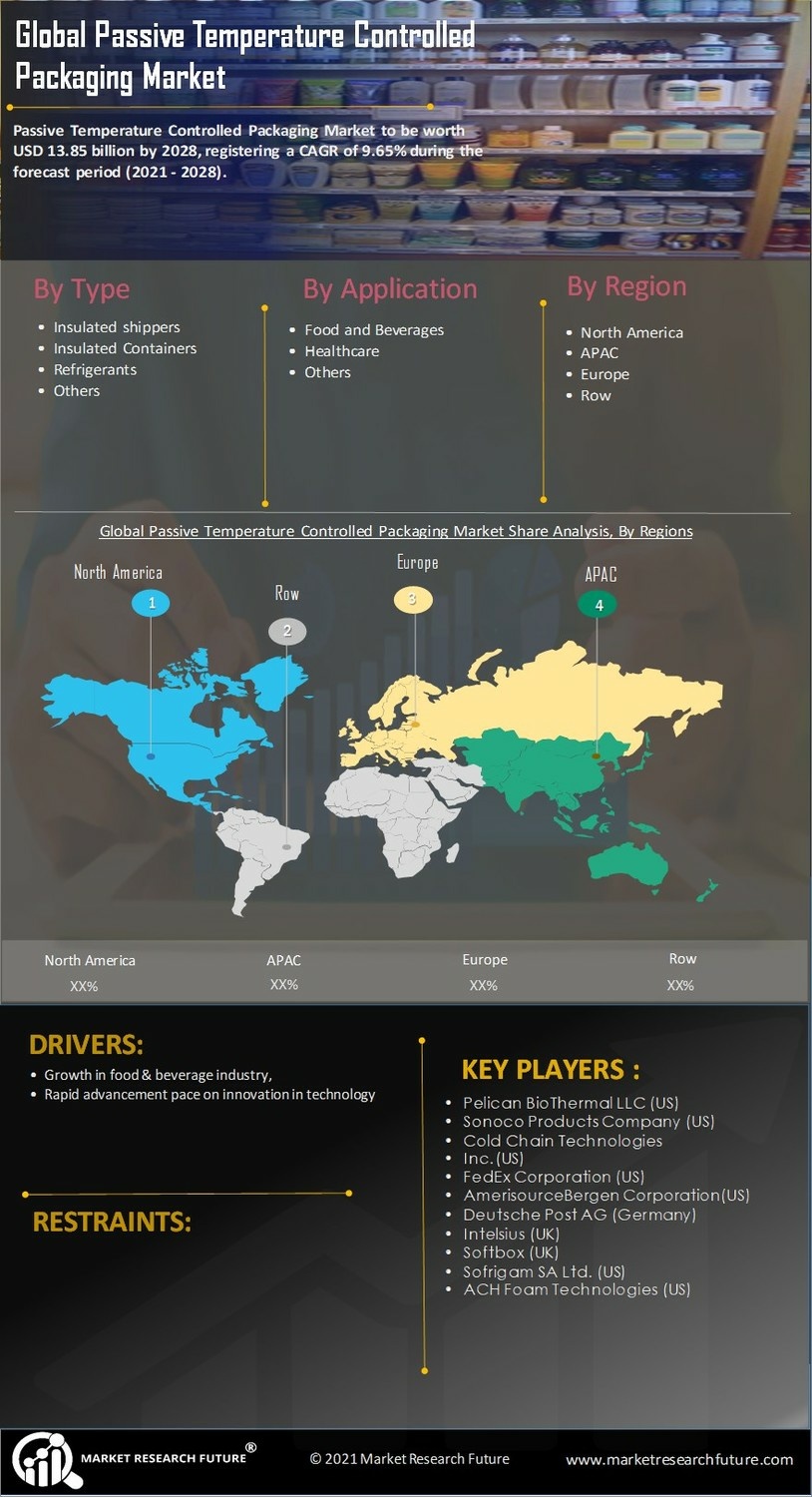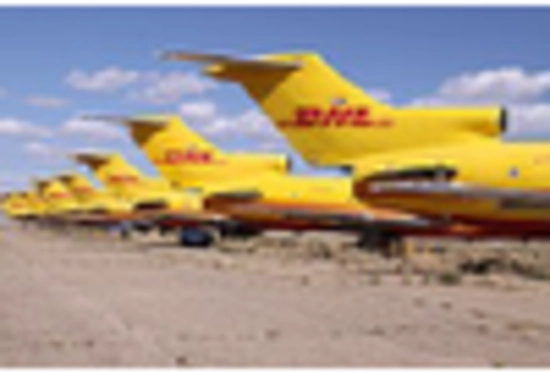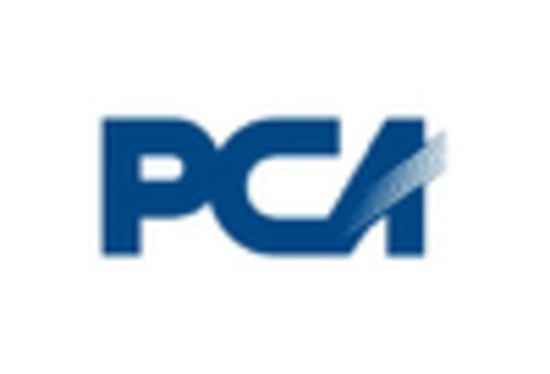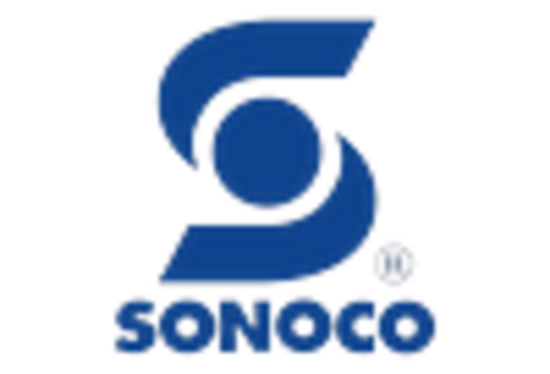Increasing Regulatory Standards
The rise in regulatory standards concerning the transportation and storage of temperature-sensitive products is a significant driver for the Passive Temperature Controlled Packaging Market. Regulatory bodies are increasingly enforcing stringent guidelines to ensure product safety and efficacy, particularly in the pharmaceutical and food sectors. For instance, the World Health Organization has established guidelines for the distribution of vaccines, emphasizing the importance of maintaining specific temperature ranges. Compliance with these regulations necessitates the use of effective passive temperature-controlled packaging solutions. As companies strive to meet these regulatory requirements, the demand for reliable packaging options is expected to grow. This trend not only enhances consumer safety but also drives innovation within the Passive Temperature Controlled Packaging Market, as manufacturers seek to develop compliant and efficient packaging solutions.
Advancements in Packaging Materials
Innovations in packaging materials are significantly influencing the Passive Temperature Controlled Packaging Market. The development of advanced insulation materials, such as aerogels and phase change materials, enhances the thermal performance of packaging solutions. These materials not only improve temperature retention but also reduce the overall weight of packaging, leading to cost savings in transportation. Recent studies indicate that the use of advanced materials can improve temperature stability by up to 30%, which is crucial for maintaining the efficacy of temperature-sensitive products. Additionally, the integration of smart technologies, such as temperature indicators and tracking systems, further enhances the functionality of passive packaging solutions. As these advancements continue to evolve, they are expected to drive the demand for innovative passive temperature-controlled packaging solutions across various industries.
Growth of E-commerce and Online Food Delivery
The rapid expansion of e-commerce and online food delivery services is a notable driver for the Passive Temperature Controlled Packaging Market. As consumers increasingly turn to online platforms for purchasing perishable goods, the need for effective temperature management during transit becomes paramount. Reports indicate that the e-commerce food market is projected to grow at a compound annual growth rate of over 15% in the coming years. This growth necessitates the implementation of reliable passive temperature-controlled packaging solutions to ensure that products reach consumers in optimal condition. Furthermore, the convenience of online shopping has led to heightened expectations regarding product quality and freshness, further driving the demand for advanced packaging solutions. Consequently, the growth of e-commerce and online food delivery services is likely to significantly impact the Passive Temperature Controlled Packaging Market.
Rising Demand for Temperature-Sensitive Products
The increasing demand for temperature-sensitive products, particularly in the pharmaceutical and food sectors, is a key driver for the Passive Temperature Controlled Packaging Market. As consumers become more health-conscious, the need for effective temperature management during transportation and storage of perishable goods intensifies. According to industry reports, the pharmaceutical sector alone is projected to reach a market value of over 1 trillion USD by 2025, necessitating robust packaging solutions. This trend indicates a growing reliance on passive temperature-controlled packaging to ensure product integrity and safety. Furthermore, the food industry is also witnessing a surge in demand for fresh and organic products, which require stringent temperature control. Thus, the rising demand for temperature-sensitive products is likely to propel the growth of the Passive Temperature Controlled Packaging Market.
Focus on Sustainability and Eco-Friendly Solutions
The increasing focus on sustainability and eco-friendly solutions is emerging as a crucial driver for the Passive Temperature Controlled Packaging Market. As environmental concerns gain prominence, consumers and businesses alike are seeking packaging options that minimize ecological impact. The demand for recyclable and biodegradable materials is on the rise, prompting manufacturers to innovate and develop sustainable packaging solutions. Recent surveys indicate that over 70% of consumers are willing to pay a premium for environmentally friendly packaging. This shift in consumer preferences is likely to influence the design and production of passive temperature-controlled packaging, as companies strive to align with sustainability goals. By adopting eco-friendly practices, businesses not only enhance their brand image but also contribute to the overall growth of the Passive Temperature Controlled Packaging Market.


















Leave a Comment